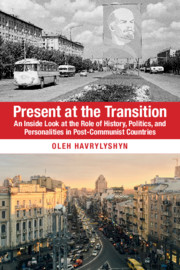 Present at the Transition
Present at the Transition Hysteresis versus Critical Juncture
from Part II - Choice of Strategy
Published online by Cambridge University Press: 04 May 2020
Four major forces played a role in determining whether a country moved rapidly in the transformation: historical legacy; reform commitment by leaders; the role of specialist technocrats; and external influences. This chapter addresses the historical legacies that affected the strategy and speed of transition, be they inertia or return to earlier history. While in general being closer to Western Europe and today’s European Union, or having a shorter history of communism tended to propel countries toward more rapid reforms, there were many exceptions on both sides of the divide. Thus, Bulgaria, Serbia, and Romania initially moved far more slowly. Farther east, Russia, Kyrgyzstan, and to some extent Armenia initially moved far faster on economic reforms that others in the USSR – although this was effort was soon aborted. The chapter also asks how related historical issues affected economic reform speed: the occurrence of wars or civil conflicts (Yugoslav republics, Armenia and Azerbaijan, and Tajikistan); and the role of nationalism – sometimes positive (the Baltics and Ukraine), sometimes negative (Armenia and Azerbaijan, Georgia, and Moldova).
To save this book to your Kindle, first ensure no-reply@cambridge.org is added to your Approved Personal Document E-mail List under your Personal Document Settings on the Manage Your Content and Devices page of your Amazon account. Then enter the ‘name’ part of your Kindle email address below. Find out more about saving to your Kindle.
Note you can select to save to either the @free.kindle.com or @kindle.com variations. ‘@free.kindle.com’ emails are free but can only be saved to your device when it is connected to wi-fi. ‘@kindle.com’ emails can be delivered even when you are not connected to wi-fi, but note that service fees apply.
Find out more about the Kindle Personal Document Service.
To save content items to your account, please confirm that you agree to abide by our usage policies. If this is the first time you use this feature, you will be asked to authorise Cambridge Core to connect with your account. Find out more about saving content to Dropbox.
To save content items to your account, please confirm that you agree to abide by our usage policies. If this is the first time you use this feature, you will be asked to authorise Cambridge Core to connect with your account. Find out more about saving content to Google Drive.